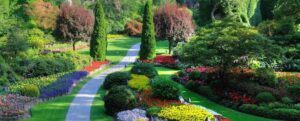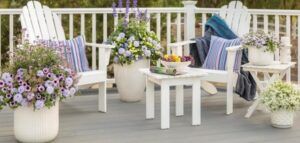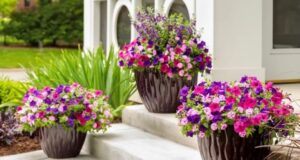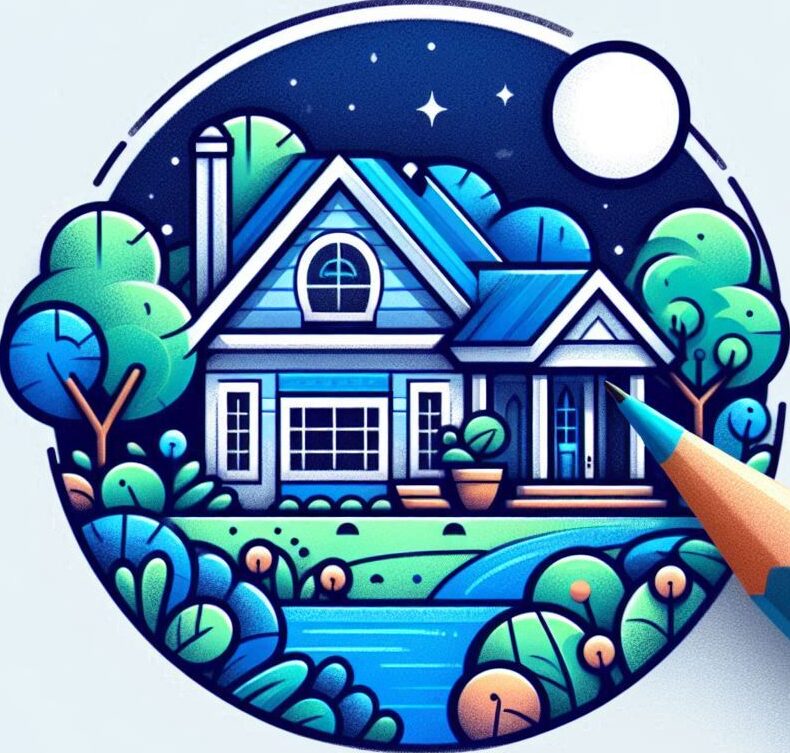Imagine stepping into your garden and feeling instantly uplifted by the beautiful blend of colors around you. Whether you’re seeking a calm, soothing escape or a bold, vibrant statement, color can make all the difference in your outdoor space!
Explore how to use color theory to design a garden that’s as inviting as it is stunning. From choosing the right flowers to complementing your landscape with colorful accents, these tips will help you create a space that reflects your unique style.
💬 What’s your favorite color combination for gardens? Are you more into warm tones or cool, calming shades? Share your thoughts in the comments—I’d love to hear what’s blooming in your garden this season!

Color theory isn’t just for artists or interior designers; it plays a huge role in how you can create a visually stunning garden. Diving into color starts with understanding the color wheel, which maps out the primary colors: red, yellow, and blue. These are your building blocks. Combine them and you get secondary colors: green, orange, and purple. Mix those with the primaries, and voilà, you’ve got tertiary colors like red-orange and blue-green.
The color wheel is your ultimate tool. It’s like your garden’s compass, guiding you through plant selection and arrangement with an eye for harmony or contrast. You can use it to make a garden that’s peaceful and soothing or one that’s full of energy and excitement.
Harmony and contrast are the bread and butter of garden design. A harmonious garden is all about calm and elegance, maybe using colors that are neighbors on the wheel, like blue and green. For a more vibrant, daring garden, look to complementary colors—those sitting opposite each other on the wheel, like yellow and purple.
Understanding these basics untangles the mystery of color and helps you select plants that flatter each other and the overall vibe of your garden. You’ll be amazed at how just a little color theory can turn your outdoor space into a canvas of colors that change with every season.
Harmonious Color Schemes: Creating a Garden with Mood and Story
When you think of your garden, imagine it as your personal sanctuary, one that tells your unique story with every bloom. This is where choosing the right color scheme comes in. By picking the right colors, you set the mood and theme for your entire space.
For a tranquil and unified look, go for a monochromatic scheme. This means playing with different shades, tints, and tones of a single color. Picture a garden with varying shades of lavender, from the palest lilac to the deepest purple. This approach highlights the natural textures and forms in your garden, making each detail pop.

If you’re looking for something soothing with a little more variety, think about an analogous color scheme. This involves selecting colors that sit next to each other on the color wheel, like blue, green, and teal. It’s easy on the eyes, creating an all-around serene setting. Ideal for spaces meant for relaxation and queit moments.
Craving a bit of boldness? Complementary color schemes are your go-to. These use colors that are opposite each other on the wheel, such as red and green or yellow and purple. The result? A dynamic garden full of life and contrast. Perfect for those who want to make a statement.
For something that balances vibrancy with harmony, consider a triadic color scheme. Pick three colors evenly spaced on the wheel. The trio offers a balanced flair; you get the brightness while maintaining a sense of unity in your garden. Think of a sunflower field, where yellows, blues, and reds create a lively yet harmonious scene.
Each of these schemes can transform your garden into a living expression of your taste and personality. The aim is to create a space that speaks to you and meets your needs—whether you’re after a calm retreat or a vibrant party zone.
Advanced Strategies in Color Matching and Contrast
To really level up your garden game, mastering color matching and contrast is key. It’s all about finding that sweet spot where colors work together effortlessly, creating a visual symphony rather than a cacophony. When you match colors, you’re aiming for cohesion through similar tones and intensities. This isn’t just easier on the eyes but also gives your garden a unified feel.

On the flip side, using contrast brings depth and a splash of excitement. It’s not just about color but also texture and form. Contrast can draw the eye to focal points like a standout flower bed or a unique garden ornament. This adds layers to your garden’s story, ensuring there’s always something fresh to catch the eye.
Think of texture as your secret weapon here. Fine textures, like airy ferns, can create an illusion of more space, while bold textures from plants like large-leafed hostas add substance and interest. Mixing these textures with your color palette boosts your garden’s visual appeal, making it feel dynamic and structured.
Consider how lighting can affect your color choices. Sunlight changes the perception of color, brightening some shades while toning down others. Use this to your advantage by brightening shaded corners with punchy colors or cooling down sunny spots with softer hues.
Incorporating these strategies is like adding a sophisticated toolkit to your garden plans. With careful consideration and a touch of creativity, you can create spaces that are not just visually striking but also deeply personal.
Personalizing Your Garden: The Art of Combining Color and Emotion
Your garden is more than just a collection of plants; it’s a reflection of your personality and aesthetic preferences. Personalization is the key ingredient that transforms any garden into a truly special retreat.
Start by thinking about how colors influence feelings and moods. Warm hues like reds, oranges, and yellows can energize your space, making it perfect for areas meant for lively gatherings. Cooler colors such as blues and greens bring tranquility, ideal for quiet retreats.
Incorporate seasonal planning in your color choices. By selecting plants that bloom at different times, you can ensure your garden has something to offer all year round. This not only maintains a consistent theme but also keeps your space visually engaging through the seasons.
Don’t underestimate the power of white. Acting as a neutral canvas, it allows other colors to shine while providing a visual breather. It’s especially effective in moon gardens, where the glow of the moonlight can be enjoyed.
Think about how light plays into your garden’s palette. Utilize brighter colors to illuminate shaded areas and choose cooler shades to calm sun-drenched spots.
Green, with its endless variations, plays a pivotal role as a unifier in your garden. It provides a peaceful backdrop that makes other colors stand out and adds continuity amidst a kaleidoscope of colors.
Finally, add personal touches such as sculptures, benches, or pathways that complement your chosen color scheme. These elements can create focal points or offer cozy nooks that enhance your garden’s atmosphere.
Your garden is a canvas for expression, allowing you to craft an environment that brings joy and peace. Don’t be afraid to experiment and let your garden evolve with your tastes. With the right combination of color, texture, and personal flair, you can create your own outdoor paradise.
